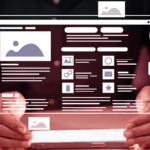By Marc Fanelli, SVP of Digital Audiences, Dun & Bradstreet
The B2B buyer’s journey has evolved into a dynamic, multifaceted, and—yes—often lengthy process. Especially at the enterprise level, the traditional linear path from awareness to purchase has transformed into a complex web of interactions and decision points—one that B2B marketers must navigate adeptly if they’re going to have any chance of breaking through the growing media cacophony.
Marketers looking to reach enterprise B2B buyers need to set aside the idea of a clean buyer journey that flows from problem identification to solution exploration to requirements building and, finally, to supplier selection. The reality today looks a lot different.
The New Path to Purchase
According to Gartner, 77 percent of B2B buyers say their latest purchase was very complex or difficult. The typical buying group for a complex B2B solution now involves six to 10 decision makers‚ and each comes to the table armed with four or five pieces of information they’ve gathered independently.
The enterprise B2B buying process no longer plays out in a predictable, linear order. Rather, customers engage in “looping,” regularly revisiting each buying step.

Increasingly, enterprise B2B buyers prefer to do their own research before even talking to a salesperson, meaning that more of the journey is ultimately influenced by marketing processes. Across the board, the journey itself is getting longer.
The New Enterprise B2B Buyer
The enterprise B2B buyer journey has evolved, as have the buyers themselves. Today’s enterprise B2B buyer is younger, digital-first, and dominates the share of voice online. In fact, nearly two-thirds (65 percent) of B2B buyers are between the ages of 18 and 40.
Overall, B2B professionals’ activity on social media has increased. Close to 40 percent of professionals in all sectors worldwide said they engaged with business content multiple times daily in 2022, up from 28 percent in 2021. Importantly, today’s Millennial B2B buyers, despite the comparative complexity of B2B buys, now expect to have the option of easy and fast B2B ecommerce experiences, similar to the ones they’ve come to expect on the B2C side.

Given these buyer expectations, social media is likely being underutilized by most enterprise B2B marketing organizations. This channel represents a strong middle-to-lower funnel play for B2B companies, and it’s worth noting that LinkedIn is not the only place to run B2B marketing; these buyers are receptive to professional messaging within their personal channels as well.
The New Enterprise B2B Channels
Today, an estimated 90 percent of the B2B buyer journey is complete before a buyer reaches out to a salesperson. This journey is happening mostly in digital channels—but not entirely. Social media, as noted, is a more relevant channel than ever for reaching B2B buyers. However, it would be unwise for B2B marketers to wholesale dismiss certain traditional avenues when reaching out to enterprise buyers; ultimately, it comes down to the individual.
Right now, a dichotomy exists within the B2B buyer space—one of digital natives vs. digital immigrants. Digital natives are the newer rank and file who have grown up in the digital world, and they start their search online, prefer visual formats, and think phone calls are disruptive. Meanwhile, digital immigrants are an experienced class of buyers who are learning the digital ways and still receptive to more-direct traditional communication.
With less in-person interaction with vendors following the pandemic, B2B buyers are being inundated with cold emails, LinkedIn messages and phone calls, often without discernment for who is being contacted. Typically, cold outreach gets a bad rep in the industry, but it’s understandable why it still persists. Simply put, it still kind of works. For many industries, cold calling is often the second most successful source of deal flow after referrals—but a big part of this success likely has to do with who is contacted. The average age of an enterprise CEO is 59, and research has found that that the C-suite prefers calls to other forms of cold outreach.
Refining B2B Tactics for the Enterprise Buyer
Marketing owns more of the B2B buyer journey than ever, so it’s imperative for tactics to keep pace with the enterprise reality. In this regard, B2B marketers should plan around the following:
- The enterprise buying journey is non-linear and risk averse. Selling is harder, and marketing needs to pick up the slack.
- More informational content is needed. The average person reviews two to five pieces of content before making any decisions.
- Millennials are more involved in the buying decisions. These are social-media-savvy individuals with consumer-buying mindsets.
- Data-driven segmentation is key. B2B marketers must tailor their approaches to the individual, both in terms of new vs. existing clients, seniority, and more.
Ultimately, having access to high-quality B2B buyer data will make or break success with today’s enterprise-level buyers. The journey has changed, along with the channels and buyers themselves. B2B marketers must be prepared to meet them in their new reality.







